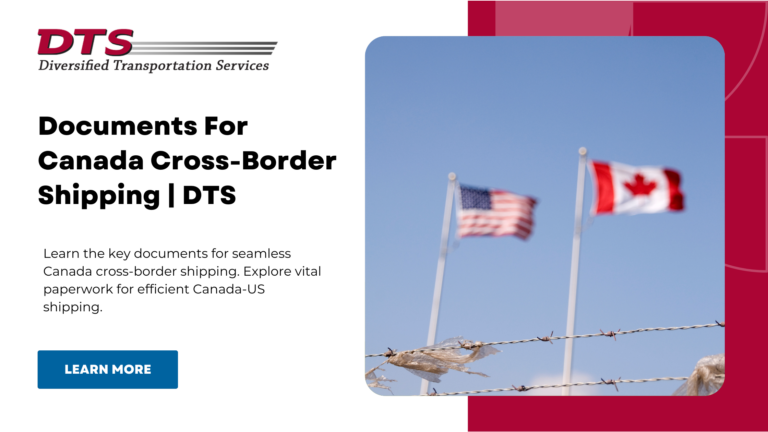
Understanding the documents covered for Canada cross-border shipping is crucial to help ensure your shipments get to their destination with minimal disruption. If shipping to Canada or out of Canada is important for your business, you need to know about the key documents you need to get your freight across the Canada/US border. Understanding what these documents cover is crucial to help ensure your shipments get to their destination with minimal disruption.
In this post, we’ll examine six critical documents for shipping cross-border freight into and out of Canada.
Here are some key documents you need to know about when sending cross-border freight to or from Canada.
The Canada Border Services Agency (CBSA) uses the Customs Coding Form B3-3 for Canada cross-border shipping. This document includes vital details about the goods being shipped, including:
The B3-3 form must be signed by the importer/agent to declare that all information it includes is true.
A commercial invoice is a straightforward document for Canada cross-border shipping.
It describes the item(s) being shipped into Canada in detail and includes their value. Always be transparent with values — avoid undervaluing the items to cut costs. Any discrepancies could lead to delays with shipping and create a domino effect, disrupting further shipments and your revenue.
You can obtain a Canada customs invoice (CCI) from your carrier, though it’s not essential for all cross-border freight.
A CCI is only required for commercial shipments valued at $2,500 (CAD) or above. The items being shipped should also be subject to sales tax and other duties. Items covered by HTSUS Chapter 9810 (items imported for religious, educational, scientific, and other institutions) do not need a Canada customs invoice.
The information included in the CCI includes:
Buyers and sellers need a NAFTA Certificate of Origin at customs to prove where goods originated.
A NAFTA Certificate of Origin is required for all shipments priced at more than $2,500 (USD) when imported into the US and for goods worth more than $3,000 (CAD) exported to Canada. The exporter is responsible for providing the importer with a valid certificate.
A bill of lading describes the conditions under which a shipment has been made, with information on the product being shipped, its destination, and its value.
Your bill of lading is a bit like a receipt — it provides all parties involved with documentation on the sending and receiving of goods. It can also be a title of ownership, with delivery showing the contract has been completed.
All parties involved are legally required to follow the bill of lading, as it’s a legally binding agreement. Shippers can also transfer ownership of a shipment to one or more other parties while it’s en route.
Crucially, if a carrier fails to deliver a shipment as specified, they may face legal consequences (e.g., a fine or prosecution) based on the severity of the matter.
Head to this post to learn more about the bill of lading.
The last document you need for cross-border shipping to Canada or from Canada is the Electronic Export Information form. The US Census Bureau uses the data from the Electronic Information Form to track trade statistics and inform trade regulations.
This has replaced the Shipper’s Export Declaration, which used to be required for all goods exported from the US with a value of at least $2,500 (USD). The Census Bureau has now stopped accepting SED forms.
You need to complete an EEI form if the items being shipped are worth $2,500 (USD) or more. An EEI form is also required for goods needing an export license (regardless of destination or value). You can learn more about the EEI at the official International Trade Administration website.
The six documents covered in this post are crucial for properly delivering cross-border freight, whether you’re shipping it into or out of Canada.
Cross-border shipping can be complicated, so staying informed about all the intricacies is a good idea to avoid any costly mistakes.
Here at DTS, we want to make sure businesses have all the information they need to make informed freight choices. We are a shipping logistics company with more than 32 years of experience facilitating freight transportation solutions.
For more helpful insights and tips about cross-border freight, browse the comprehensive DTS blog. For a cross-border shipping quote or advice, get in touch with the professional DTS team.
Whether you're a company looking to improve one facet of your supply chain, your entire supply chain, or simply looking for a transportation and logistics consultation, we can help.